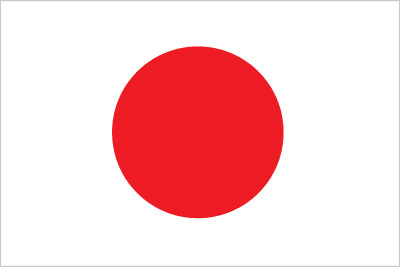
Types and Differences of Japanese Miso
Miso is a fermented food made by fermenting grains such as soybeans, rice, and barley with salt and koji, and is used in miso soup and various dishes in Japan.
There is not just one type of miso, but there are multiple types depending on the ingredients, taste, and color.
According to data from the Ministry of Agriculture, Forestry and Fisheries, the export volume of miso has increased by about 1.6 times over the six years from 2013 to 2019 , and it is expected to continue increasing in the future.
According to the 2019 survey, the United States is the top export destination, accounting for 4,818 tons, followed by Asian countries such as China and Thailand, and it can be seen that Europe is also growing in popularity.
Here, we will introduce the types and differences of Japanese miso, which is showing steady growth in the global food market.


Differences in Japanese miso ingredients
First of all, looking at the ingredients, Japanese miso is classified into four types: rice miso, barley miso, soybean miso, and blended miso.
rice miso
"Rice miso" is made by adding rice malt to soybeans, and 80 % of the miso produced in Japan is this.
It is produced in a wide range from Hokkaido to Shikoku.
Rice miso has a neutral taste, so it goes well with any dish.
And "white miso" is also a kind of rice miso.
barley miso
Barley miso is made by adding barley malt to soybeans, and is produced mainly in the Chugoku, Shikoku, and Kyushu regions.
It is often made with a relatively low amount of salt and a high proportion of koji, giving it a strong sweetness.
On the other hand, it is said that the large amount of koji makes it easy for fermentation to proceed and discoloration.
The most distinctive feature of barley miso is its aroma, which is more savory and sweet than other types of miso.
Bean miso
"Mame miso" is made only from soybeans and salt, and is produced mainly in the Tokai region.
It is also called “red miso” because it has a reddish dark brown color.
It has less sugar than regular miso, so it is less sweet and salty.
Because soybean miso contains abundant nutrients, it is starting to attract attention in terms of health and beauty, especially among women.
mixed miso
It is a mixture of three or two types of rice miso, barley miso, or soybean miso.
Mixed miso can be combined in a wide variety of ways, such as light-colored ones, black ones, wheat-based ones, and rice-based ones. increase.

Regional Characteristics of Japanese Miso
Next, let's take a look at the regional characteristics of miso in Japan.
From Hokkaido to Kyushu, the miso used varies from region to region, and there is also something called “local miso”.
Hokkaido
Red-based medium-spicy miso is typical, but in recent years white miso seems to be popular.
Typical Hokkaido dishes that use miso include “Ishikari nabe” and “miso ramen.”
Hokkaido miso
Spicy rice miso. It is characterized by its low salt content and moderately spicy taste.

Tohoku region
Red and spicy rice miso is the mainstream.
Standard dishes that use miso include scallop grilled miso (Aomori), squid monpeyaki (Akita), and donko soup (Miyagi).

Tsugaru miso (Aomori)
It is also called “Tsugaru Sannen Miso”.
Although it is dry, it is mellow in the mouth because it is aged for a long time.
Akita miso (Akita)
Because it uses a lot of rice malt from Akita, a rice-growing region, it has a dry yet natural sweetness.
Sendai miso (Miyagi)
It is a traditional dry red miso that Date Masamune established a miso factory called Oensogura during the Sengoku period.
Hokuriku region
Since it used to be an area of exchange that connected Tohoku and Kansai, light-colored and dry rice miso that has the characteristics of both is the mainstream.
A classic dish that uses miso is the lotus root dumpling soup (Ishikawa).

Kaga Miso (Ishikawa)
A dry red miso with a relatively high salt content.
- Koushinetsu region
Light-colored to red dry rice miso is the mainstream.
Gohei-mochi (Nagano) is a standard dish that uses miso.
Echigo Miso (Niigata)
Spicy rice miso. It is also called uki koji miso because the rice grains look like they are floating in the miso.
Shinshu miso (Nagano)
Boasting the largest production volume in Japan. This miso is characterized by its light color, dry taste, and faintly sour aroma.
Kanto region
In northern Kanto, there is a dry barley miso called “inaka miso”, but in the Kanto region as a whole, dry rice miso is the mainstream.
Miso dengaku (Tokyo) is a classic dish that uses miso.

Edo Sweet Miso (Tokyo )
It has a deep reddish brown color because it uses steamed soybeans, and has a rich sweetness due to the high proportion of rice malt.
- Tokai region
Shizuoka produces rice miso, but Aichi, Mie, and Gifu produce soybean miso.
A standard dish that uses miso is “Miso Nikomi Udon (Aichi)”.
Tokai soybean miso (Aichi, Mie, Gifu)
It is also called Nagoya miso, Sanshu miso, and Hatcho miso. It is characterized by its rich umami and astringency.
- Kansai region
White miso with a high proportion of rice malt is characterized by its strong sweetness.
Due to its low salt content, it is a short-term aging type.
A classic dish that uses miso is "Saikyo-zuke".
Kansai white miso
The color is an elegant golden color because soybeans boiled with the skin removed and highly polished rice are used.
- Chugoku region
On the Seto Inland Sea side, barley miso is produced, on the Sea of Japan side, light-colored dry miso is produced, and on the Seto Inland Sea side of the Kansai region, white, sweet rice miso is produced.
A classic dish that uses miso is oyster hotpot (Hiroshima).
Fuchu Miso (Hiroshima)
Cream-colored sweet miso made from peeled soybeans.
- Shikoku region
The Seto Inland Sea side is slightly white, while the Pacific Ocean side is red.
Anmochizoni (Kagawa) is a standard dish that uses miso.
Sanuki miso (Kagawa)
It is one of the representative white sweet miso with rich sweetness.
- Kyushu region
Barley miso is the mainstream, but around Fukuoka, miso made with rice and barley is the mainstream.
A classic dish that uses miso is "cold soup (Miyazaki)."
Kyushu barley miso
It has a high proportion of barley koji, a slightly low salt content and a strong sweetness.
Miso handled by Dear foods
Our online shop also handles various miso.
We are based in Germany and offer free shipping for purchases over €50, so please take a look.






